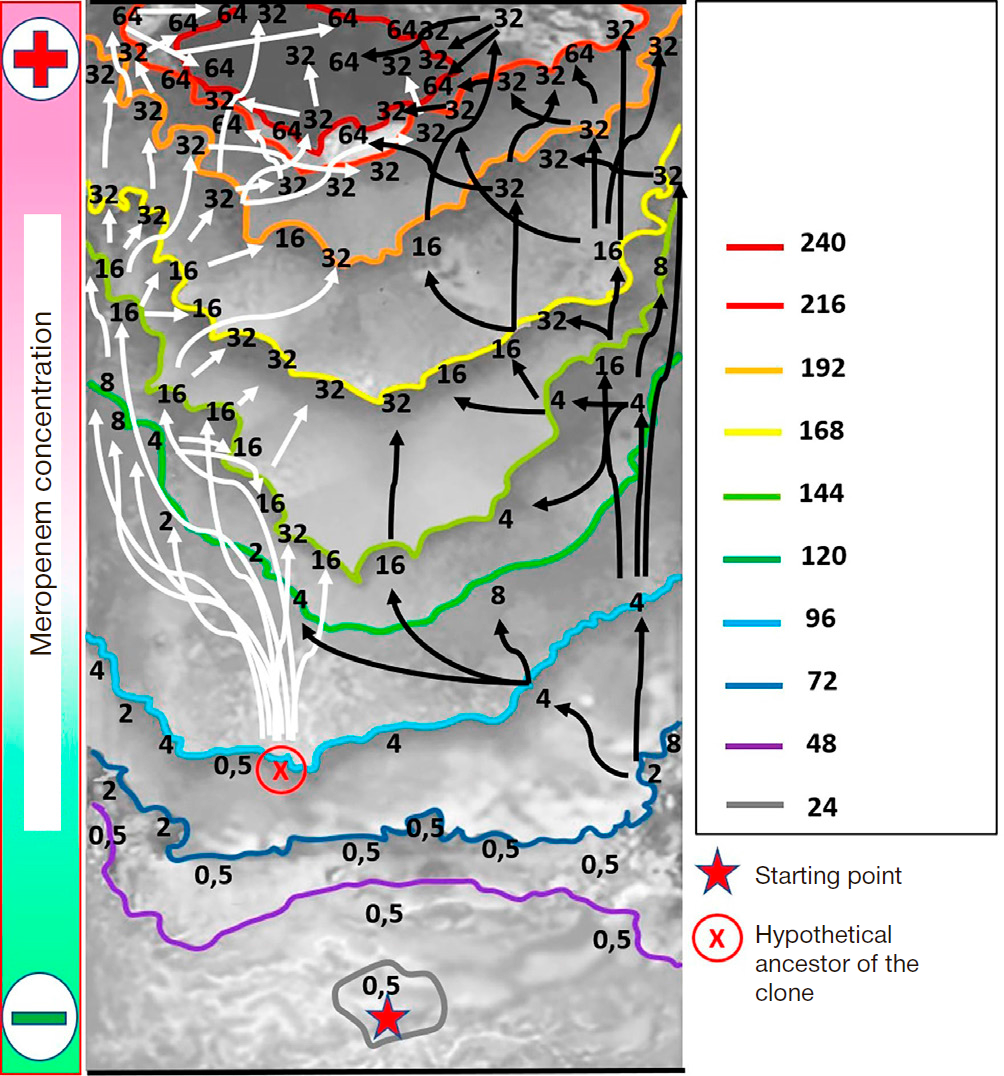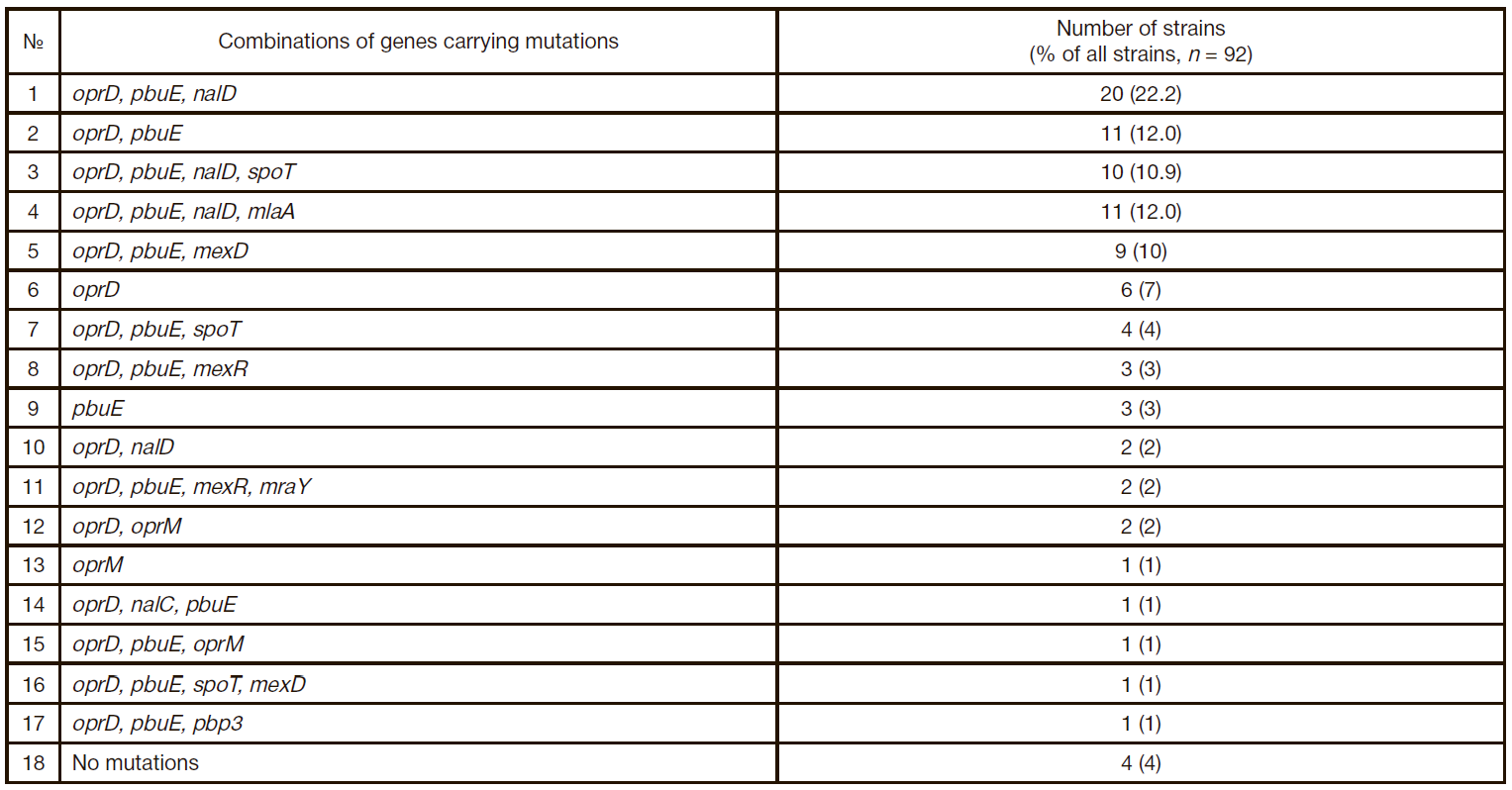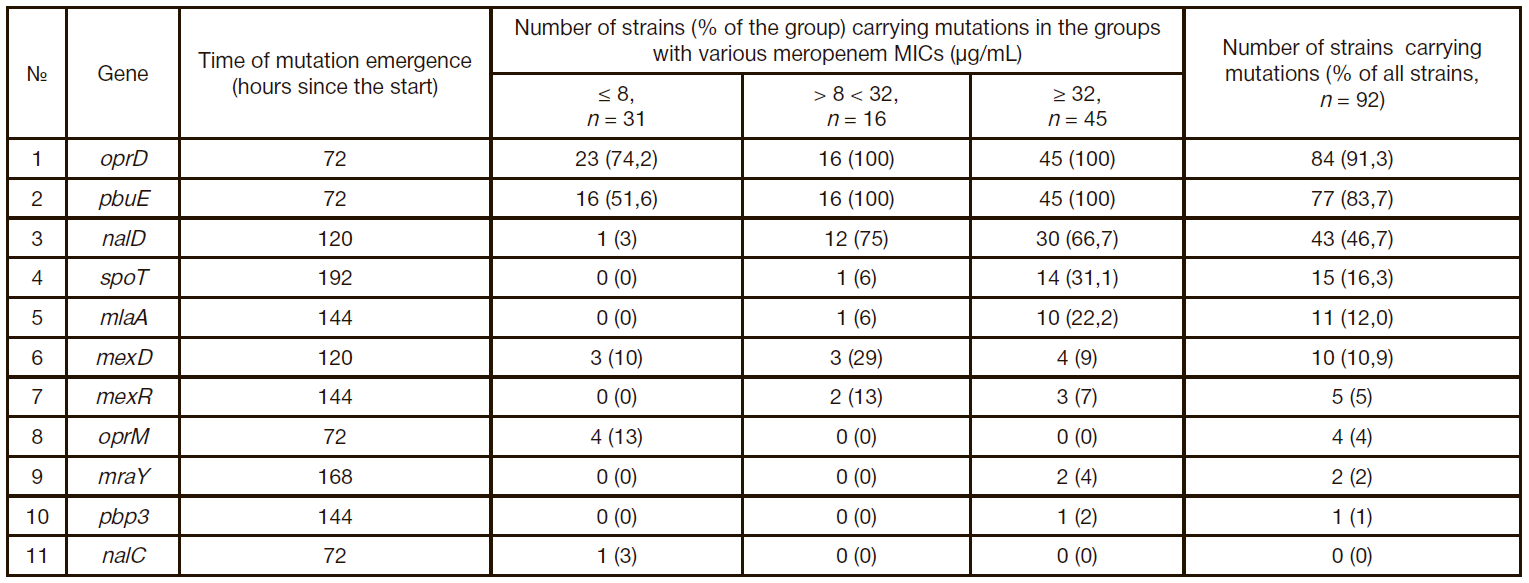
This article is an open access article distributed under the terms and conditions of the Creative Commons Attribution license (CC BY).
ORIGINAL RESEARCH
Mutational basis of Meropenem resistance in Pseudomonas aeruginosa
Pirogov Russian National Research Medical University, Moscow, Russia
Ostrovityanova, 1, Moscow, 117997, Russia: Correspondence should be addressed: Igor V. Chebotar
ur.xednay@nnrazin
Funding: the study was supported by the Russian Science Foundation (project No. 20-15-00235).
Acknowledgements: the authors thank the Center of Precision Genome Editing and Genetic Technologies for Biomedicine of the Pirogov Russian National Research Medical University for their advice on the research methods.
Author contribution: Chebotar IV — concept, manuscript writing; Bocharova YuA — methods, formal analysis; Chaplin AV — formal analysis of sequencing data; Savinova TA — formal analysis of sequencing data; Vasiliadis YuA — methods, sequencing; Mayansky NA — concept, manuscript editing.
Compliance with ethical standards: the study was performed in full compliance with the principles of the Declaration of Helsinki and the standards for handling opportunistic pathogens.




